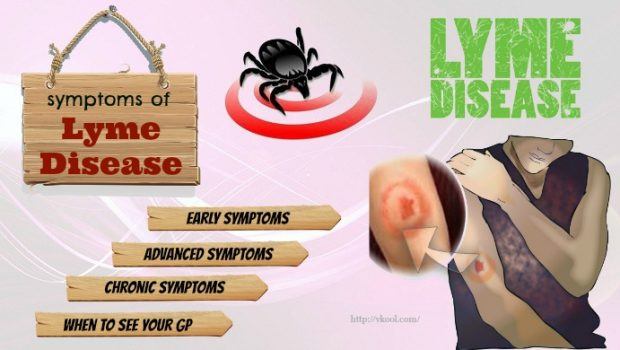
Lyme is a disease caused by bacteria that comes with infected ticks to the body, which means you may probably suffer from this disease after being bitten by a tick. Lyme disease can be actually treated but it may cause more serious effects to the health if the patients are late diagnosed, so it is necessary to learn about the symptoms of Lyme disease to get early treatments when needed. The reasons Lyme disease is difficult to diagnose may be that people do not always be aware of a tick formed in their body because of some insects thereby not seeking medical treatment until the symptoms develop or because the blood tests fail to diagnose Lyme disease acutely in some positive case.
Because its symptoms are hard to distinguish from other illnesses and many people cannot realize their conditions until advanced symptoms, you should pay attention to the insects around as well as conduct spot checks for ticks regularly so that call your doctor if you feel something weird with your health.
At present, VKool.com would like to show you4 common signs and symptoms of Lyme disease in adults. The symptoms of the disease are quite specific and classified into 3 main groups according to its developing stages, which should be recognized as soon as possible to avoid further serious problems. For those who don’t know what Lyme disease is and how it shows outside, just spend a few minutes reading our article to have more experience!
4 Common Signs And Symptoms Of Lyme Disease In Adults
1. Early Symptoms
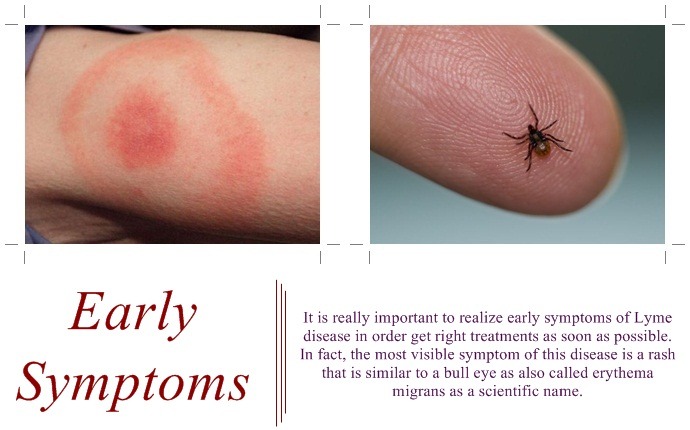
It is really important to realize early symptoms of Lyme disease in order get right treatments as soon as possible. In fact, the most visible symptom of this disease is a rash that is similar to a bull eye as also called erythema migrans as a scientific name. A rash occurs in about 80% people who have been attacked by a tick bite that is described increasingly red around this area and look like a common bug bite. It usually spreads in a circular way that is darker in the outer ring and lighter in the center. Nevertheless, not every patient with Lyme disease has such a target-shaped rash.
Not only a rash but there are also other classic signs of Lyme disease at the first stage known as headaches, a fever, fatigue, and muscle aches that can occur in certain patients.
The symptoms of Lyme disease can start within 30 days of the first infection and the incubation period may make you confused about your normal conditions. Because you don’t remember having been bitten, you just think you have the flu but not any serious health problems associated with the tick bite.
When the early symptoms of Lyme disease are not realized on time and there is no appropriate treatment then the disease may last long or chronic. Although those symptoms are similar to these stages, there are also important differences that at the late stage and chronic stages Lyme disease spreads throughout the body and brings effects to all the body system. Typically, the patients with this disease may suffer from more than one severe symptom than before, which means their health condition is more difficult to treat and they have to face more risks in their health.
2. Advanced Symptoms
When the early symptoms of Lyme disease are not well treated, the patients with this disease may experience more advanced symptoms indeed. They may suffer from joint pain that especially occurs in the knees or a stiff neck several months after infected by the tick bite or in the early stage. Moreover, shooting pain throughout the body and severe headaches can keep them stay up at night while dizziness and changes in the heart rhythm and rate are also symptoms of Lyme disease during the late period.
To be clear, it has been indicated that Lyme disease, if not be treated for several months, may cause some serious health problems, especially those give negative effects to the nervous system. In addition, the functioning loss of muscle face that is called Bell’s palsy is also a neurological complication of the disease. With Bell’s palsy, the patients cannot move their face muscles from side to side, so sometimes they look like having a stroke making others worrying. Some problems associated with the movement of the arms and legs are other advanced symptoms of Lyme disease.
It is rare but possible for the patients with Lyme disease to experience the inflammation of the eyes or some problems of the heart and the in the late stage of the disease, so they need to be really careful indeed. After weeks, months or years of infection, the patients with Lyme disease may develop inflammation of the brain membranes also known as meningitis even temporary paralysis of one face side, impaired muscle movement, and weakness or numbness in the limbs. Some other symptoms are known as nausea and vomiting or diffuse rashes that are more serious than a single bull’s-eye rash occurring at the early stage of Lyme disease.
3. Chronic Symptoms
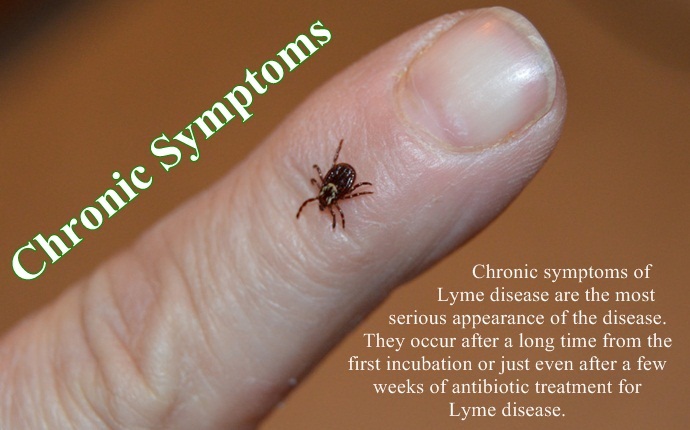
Chronic symptoms of Lyme disease are the most serious appearance of the disease. They occur after a long time from the first incubation or just even after a few weeks of antibiotic treatment for Lyme disease. With antibiotic treatments, the bacteria are gradually eliminated from the body so that killing the causes but the symptoms can last longer. The symptoms include headaches, fatigue, pains in the parts of the body, joint and muscle aches, and temporary memory problems. When Lyme disease lasts long like that, it is also called PTLDS short for post-treatment Lyme disease syndrome.
In fact, PTLDS has recently been considered as a condition because the causes of chronic Lyme disease have not been clear. Medical experts suppose that these chronic symptoms occur when the disease damages the body tissues and the immune system of the patients severely, which leads the symptoms to continue even after Lyme disease has already been eliminated from their body.
In addition, the patients can suffer from post-disease symptoms after other conditions that are caused by bacterial infections such as Reiter’s syndrome and Guillain-Barre syndrome. There are 2 different opinions, one suppose a persistent Lyme infection causes chronic Lyme disease symptoms and one suggest these symptoms are caused during infection period because of certain damage to the body. Now, the studies on this aspect have been being conducted to find out which one is accurate, so you should follow to get the earliest right information.
4. When To See Your GP
After being aware of your symptoms of Lyme disease or feeling a happened bite, you should know it is time to see your GP. However, you have to let him know if you have been in woodland or some areas in which ticks live so that he can give you the most effective treatments as well as the appreciate advice.
In fact, the diagnosis of Lyme disease is quite difficult because some of its symptoms are similar to other illnesses. If you have a rash after some days of a tick bite, you can treat it with appropriate antibiotics while not waiting for a blood test result.
However, blood tests should be carried out to find out the exact diagnosis of Lyme disease after a few weeks. These tests cannot be exact in the early stage of infection and the second test should be done if you also suspect an existing Lyme disease. For example, GP in the United Kingdom uses both of the blood tests to ensure the diagnosis of Lyme disease is accurate as a single test can sometimes give a positive result though a person does not have the infection.
Finally, if you have long-lasting or post-infectious Lyme disease symptoms, you should see a specialist in infectious or microbiology diseases so that they can send your blood sample to the national laboratory where further tests are carried out.
Recommended articles:
Eliminate Restmess Leg Syndrome Book Review
Top Common Newborn Baby Skin Problems
After reading the article on 4 common signs and symptoms of Lyme disease in adults in our main Health page, hope that you can get more information about this disease including its causes and symptoms so that find out suitable treatments as soon as possible. Please let us know if you have any question by leaving them below and share with us other symptoms of Lyme disease if you really get.
Want More Content Like This In Your Inbox?
- 10 natural home remedies for burning eyes from allergies
- Beat Your Sweating Demons Review – Is Brian’s Book Useful?
- 17 home remedies for menstrual cramps, pain and heavy bleeding
- 15 natural home remedies for high cholesterol levels are revealed
- Conquer Low Platelets Pdf Review – Can Louis’ Book Work?
- 15 Benefits Of Loquat Fruits And Leaves For The Whole Health
- Nutrition For Older Adults Guidelines: Eat For Health & Wellness
- 9 Ways on how to stop frequent urination naturally at night

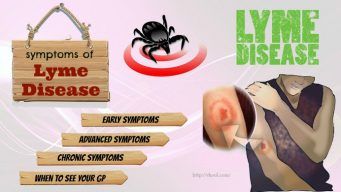


















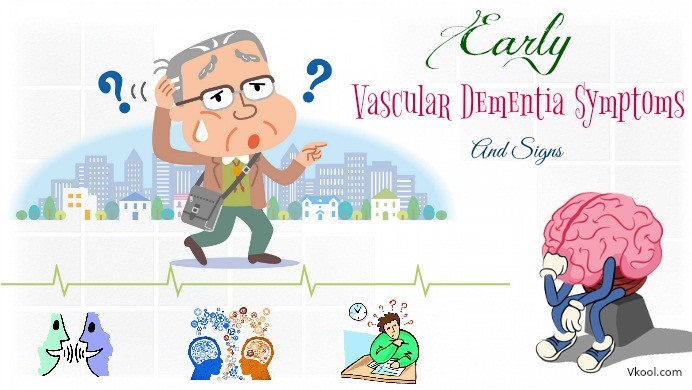

 Hemorrhoids Saviour Review – Is Janet’s Treatment Useful?
Hemorrhoids Saviour Review – Is Janet’s Treatment Useful?  List Of 31 Iron Rich Foods For Toddlers
List Of 31 Iron Rich Foods For Toddlers  25 Natural Ways To Treat Constipation At Home – Why They Work?
25 Natural Ways To Treat Constipation At Home – Why They Work?  Natural remedies for macular degeneration – 15 at-home tips
Natural remedies for macular degeneration – 15 at-home tips  Diverticulitis Breakthrough Review – Can Mark’s Guide Work?
Diverticulitis Breakthrough Review – Can Mark’s Guide Work?  Natural angular cheilitis treatment: 8 over the counter remedies
Natural angular cheilitis treatment: 8 over the counter remedies  Easy baby shower recipes: 32 best ideas
Easy baby shower recipes: 32 best ideas  35 Physical therapy exercises for shoulder pain
35 Physical therapy exercises for shoulder pain  Total Six Pack Abs 3 Review – Is Mark Mcmanus’s System Useful?
Total Six Pack Abs 3 Review – Is Mark Mcmanus’s System Useful?  Top 20 Benefits Of Radish On Health And Beauty
Top 20 Benefits Of Radish On Health And Beauty